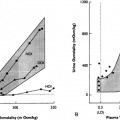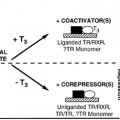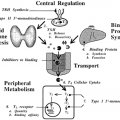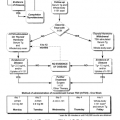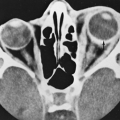ENDOCRINE-INACTIVE PITUITARY ADENOMAS
Endocrine-inactive pituitary adenomas produce clinical effects only as a direct consequence of their growth. Resulting clinical syndromes reflect either damage to the anterior pituitary gland and subsequent hypopituitarism, or compression of suprasellar and parasellar structures with development of associated neurologic deficits. Although these tumors have the necessary genetic information and cytoplasmic organelles to manufacture hormones and subunits, the products are secreted either in subclinical concentrations or in bioinactive forms; thus, these neoplasms are termed endocrine-inactive. When immunocytochemical and electron microscopic characteristics are taken into consideration, these tumors can be divided into null cell adenomas, oncocytomas, and glycoprotein-secreting adenomas.64
CLINICAL PRESENTATION
Patients with endocrine-inactive pituitary adenomas generally present with visual impairment or hypopituitarism. Headaches are common and can be severe, relating to dural pressure. A variety of visual field defects can be seen, the most common being bitemporal hemianopia or bitemporal superior quadrantanopia. Extraocular dysfunction, related to lateral growth into the cavernous sinus, can occur, with consequent compression of the oculomotor, trochlear, or abducens nerves. Dementia and other symptoms associated with hydrocephalus also can occur when these tumors compress the third ventricular outflow, producing obstructive hydrocephalus.
Stay updated, free articles. Join our Telegram channel

Full access? Get Clinical Tree


